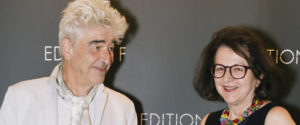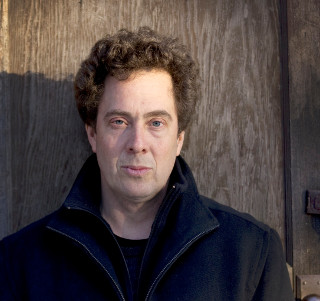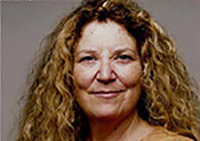
Monika FLEISCHMANN and Wolfgang STRAUSS
Artists and researchers / DE
Date: Thursday, October 19 at 16.00
Venue: The Latvian National Museum of Art
Shades of Virtuality
Virtual Reality (VR) is the technisation of perception, a translation of the natural senses into the telematic. Interfaces, such as data goggles and data gloves, invite us for immersion in virtual worlds in order to ‘comprehend’ , ‘touch’ or ‘being touched’.
Scale and Significance of VR Technology shifts with the arise of the Internet. Cyberspace – an interlinked Data Space – evolves into a new public forum of global display and absolute control, an enormous virtual mirror of real world events and the home of big data. In this context VR technology is experiencing a Renaissance, with data goggles now being extolled by the industry as the ultimate choice with the promise of developing superior immersion.
To keep pace with the growth of data knowledge over time, performative structures are needed that keep the mind alert and shake the memory.
Our own work will demonstrate how ‘difference’ and ‘new knowledge’ can emerge through immersive mixed reality installations. From Aby Warburg we borrow the concept of the Denkraum. Giulio Camillo, a spiritual ancestor of VR Art, inspired us in creating spaces of memory and knowledge. This is no longer the submersion into a virtual environment, but an actual experience of mnemonic landscapes that symbolise ideas and at the same time offer performative methods of reflection. Our presentation will trace the development of Virtuality from early artistic approaches in the field, such as Myron Krueger’s Responsive Environment (1972), to current VR-Art and raise the question: How do the ideas and visions of early VR pioneers compare to today’s immersive environments?
Biograpy. Monika Fleischmann and Wolfgang Strauss are Visionary Pioneers of Interactive Media Art. For „Home of the Brain – Philosophers Houses“ (1989-92), they received the Golden Nica of Prix Ars Electronica 1992 for the first Virtual Reality Art Work with Data Glove and Goggles, followed by numerous prestigious awards and accolades for their innovative approach and contribution to the digital world. They have worked with Virtual Immersive Environments since the 1980s, founded several Art+Technology Research Institutions in Germany such as Art+Com (Berlin), MARS Exploratory Media Lab (Bonn) and eCulture Factory (Bremen) at the renowned Fraunhofer Research. Their work is exhibited worldwide and collected by ZKM – Center for Art and Media in Karlsruhe.

David ROTHENBERG
Musician and composer / New Jersey Institute of Technology / US
Date: Thursday, October 19 at 16.00
Venue: The Latvian National Museum of Art
WHAT’S IT LIKE TO BE A NIGHTINGALE? Adventures in Interspecies Music (Talk)
Can one really communicate with other species through music? David Rothenberg has been trying to do this for many years, and his latest subject is the nightingale. With an adventurous group of musicians, scientists, and filmmakers, he is trying to get inside the aesthetic sense of this special bird. Has he succeeded?
THE UNIVOCITY OF BEING (Concert)
Rothenberg plays a special solo version of his new piece for spoken word, electronics, and clarinet, involving the ideas of Thoreau, Hegel, and Tim Dee recording the wind….
Biograpy. Musician and philosopher David Rothenberg has performed and recorded on clarinet with Pauline Oliveros, Peter Gabriel, Ray Phiri, Suzanne Vega, Scanner, Iva Bittova, Elliot Sharp, Markus Reuter, and the Karnataka College of Percussion. Most of his work has an environmental theme and involves the sounds of nature, live and in the studio. He has sixteen CDs out under his own name, including “On the Cliffs of the Heart,” named one of the top ten releases of 1995 by Jazziz magazine and “One Dark Night I Left My Silent House,” a duet album on ECM with pianist Marilyn Crispell, called “une petite miracle” by Le Monde and named by The Village Voice one of the ten best CDs of 2010.
Rothenberg is the author of Why Birds Sing, book and CD, published in seven languages and the subject of a BBC television documentary. He is also the author of numerous other books on music, art, and nature, including Thousand Mile Song, about making music with whales, and Survival of the Beautiful, about aesthetics in evolution. His book and CD Bug Music, featuring the sounds of the entomological world, has been featured on PBS News Hour and in the New Yorker. His latest recordings are Berlin Bülbül, Cool Spring and. New Cicada Trio: Live In Beacon.
www.davidrothenberg.net

Dr. Ellen Pearlman
Parsons School of Design / New School University / Art-A-Hack(TM) / Volumetric Society / New York, US
Date: Friday, October 20, 17.00
Venue: The Art Academy of Latvia
The Approaching Storm: AI, Biometrics, Big Data, Immersion and Surveillance
The rise in computing power is growing in tandem with enormous databanks of information, algorithmic processing, new methods of surveillance, and advances in biotechnology. These converging factors contain both obvious and hidden implications as both technologies of immersive entertainment, as well as technologies of control. Using examples of brain computer interfaces (BCIs) and her fully interactive immersive brain opera “Noor”, Ellen Pearlman will explore a few of the implications of these emerging and converging technologies for the future .
Biograpy. Dr. Ellen Pearlman, a Fulbright World Learning Specialist is on faculty at Parsons School of Design/New School University in New York City. She is Director of the ThoughtWorks Arts Residency, President of Art-A-Hack(TM) and Director and Curator of the Volumetric Society of New York. Her brain opera “Noor” premiered as the world’s first fully immersive interactive brain opera in a 360 degree theater in Hong Kong.

Prof. Chris SALTER
Concordia University, Department of Design and Computation Art / Hexagram network / Hexagram Concordia Centre for Research and Creation in Media Art and Technology, Montreal, CA
Date: Friday, October 20, 17.00
Venue: The Art Academy of Latvia
Immersion: What For?
With the increasing commercial take up of supposedly new “immersive”
technologies such as VR and AR, there is the sense that new forms of human sensory experience are just on the horizon – ones which are not only unprecedented but directly made possible by these technologies. The concept of “immersion” indeed seems to have overridden older notions such as critical distance, rationality or “reasoned” debate. Yet, immersion is not just articulated or instantiated by (predominantly) visual apparatuses originally birthed in Cold War laboratories and (now) Silicon Valley corporations – in fact, it seems to increasingly occupy all sorts of forms of sensory life: from art works, to health care to sleep. Immersion thus seems to be the latest in an arsenal of tools and techniques developed by our new knowledge societies to extract value from the last refuges of human experience – our bodies and our senses. This talk asks a simple question – namely, what does immersion do and for what purposes?
Biography. Chris Salter is an artist, University Research Chair in New Media, Technology and the Senses at Concordia University and Co-Director of the Hexagram network for Research-Creation in Media Arts and Technology in Montreal. He studied philosophy and economics at Emory University and completed a PhD in directing/dramatic criticism at Stanford University where he also researched and studied at CCMRA. He collaborated with Peter Sellars and William Forsythe/Frankfurt Ballet. His work has been seen all over the world at such venues as the Venice Architecture Biennale, Chronus Art Center Shanghai, Wiener Festwochen, Berliner Festspiele, Muffathalle, Vitra Design Museum, HAU-Berlin, BIAN 2014, LABoral, Lille 3000, CTM Berlin, National Art Museum of China, Ars Electronica, Villette Numerique, Todays Art, Transmediale, EXIT Festival (Maison des Arts, Creteil-Paris) among many others. He is the author of Entangled: Technology and the Transformation of Performance (MIT Press, 2010) and Alien Agency: Experimental Encounters with Art in the Making (MIT Press, 2015).